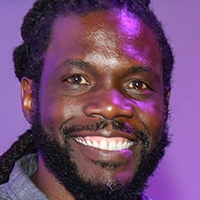Innovation has long been touted as the salve to a likely industry-wide disruption in healthcare. But how can hospitals become innovators?
To Marcus Whitney, founder & CEO of Health:Further, innovation by established players starts with a narrative.

“You can’t make progress in innovation without it,” Whitney said in a Tuesday keynote address at the HFMA Annual Conference.
Narrative, in which the industry forms its challenges and responses into a coherent story, first allows the industry to respond to its biggest challenge, negative public sentiment, Whitney said.
But negative public views of healthcare, driven by trends of historically large cost increases, is only one of the trends driving disruption, which also include:
- Entrance of disruptors like Amazon and Walmart
- Rise of the “silver tsunami”
- Demands of Millennials for immediate service and digital access
- Burnout of overtaxed clinicians
- Demands of the federal government for transparency, interoperability and less pay
“What’s really going to create disruption is the convergence of all of these things,” Whitney said.
In the face of these threats, healthcare entities are spending less than 1% of their revenue on innovation efforts.
“That’s not going to get it done,” Whitney said.
Although some healthcare leaders are dubious of disruption, Whitney warned that just because health is “different” does not mean it is immune from disruption. Another factor making disruption more likely is that many individual people are working every day to disrupt health care and a growing number of companies are helping them to get started.
“That’s the really scary thing and why your story is so important,” Whitney said.
For those worried that they need to focus on clinical-care improvements over innovation, Whitney said there is no need for them to be mutually exclusive.
For established healthcare entities to innovate, Whitney urged them to go back to the roots where all organizations started as small, struggling entities. But he acknowledged that they’re no longer the same organization they were then and so should utilize the strengths they’ve developed to be a better innovator than the organization was at its start.
Another part of innovating, Whitney said, is avoid confirmation bias, where “we spend too much time listening to each other.” He urged healthcare finance leaders to find inspiration for innovation by getting out of their comfort zones and listening to people outside their profession — while also sharing their organization’s story.
The long-time healthcare start-up investor also urged healthcare organizations to change how they view innovation. Instead of viewing it as something done by a crazy group of risk-takers, they should understand innovation is supposed to be managed in a process.
However, that doesn’t mean segmenting off innovation responsibilities to a health system’s innovation center, especially when it is led by someone with multiple other responsibilities.
That’s “where innovation goes to die,” Whitney said.
Instead, organizations successful at innovating undertake it collaboratively, with large investments in time by the organization’s leaders, and through a variety of partnerships.
Whitney said a finance narrative for innovation includes development of “an innovation supply chain,” in which every year a handful of new important innovations are integrated into the organization and impact “your balance sheet and income statement in predictable ways.”
And the most powerful parts of the narrative are the enormous stakes for healthcare leaders to succeed in their push for innovation.
“With the GDP being where it is right now, how can we afford to not drop the cost of care?” Whitney said. “It’s completely immoral to pass the buck onto the next generation; we have to do this; there is a moral imperative behind this for us; people are going bankrupt.”





